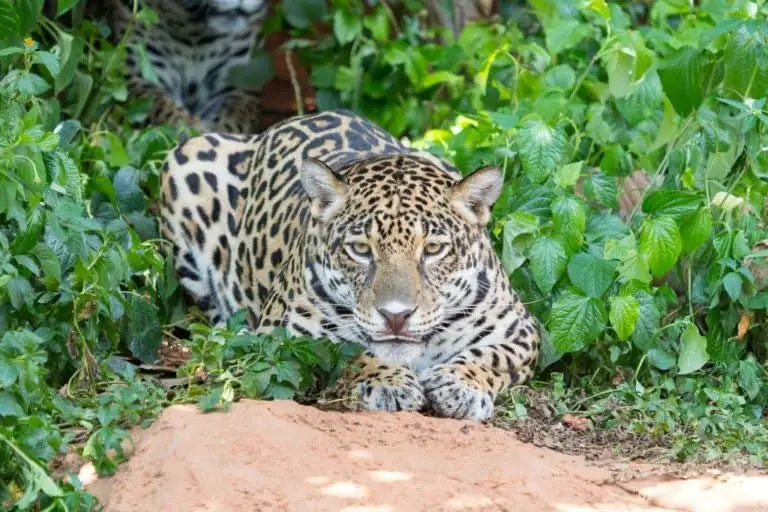Can Leopards Climb Trees? (The Surprising Answer)
The short answer is yes; leopards can climb trees. They are pretty adept at it. Their muscular bodies and sharp claws make them well-suited for scaling vertical surfaces.
Leopards often use trees as a vantage point to survey their surroundings and look for prey. They will also frequently take refuge in trees to avoid predators or escape the day’s heat. Additionally, leopards sometimes cache their kills in trees to keep them out of reach of other animals.
All of this shows that leopards are up to the task when it comes to climbing trees.
Why do leopards climb trees?
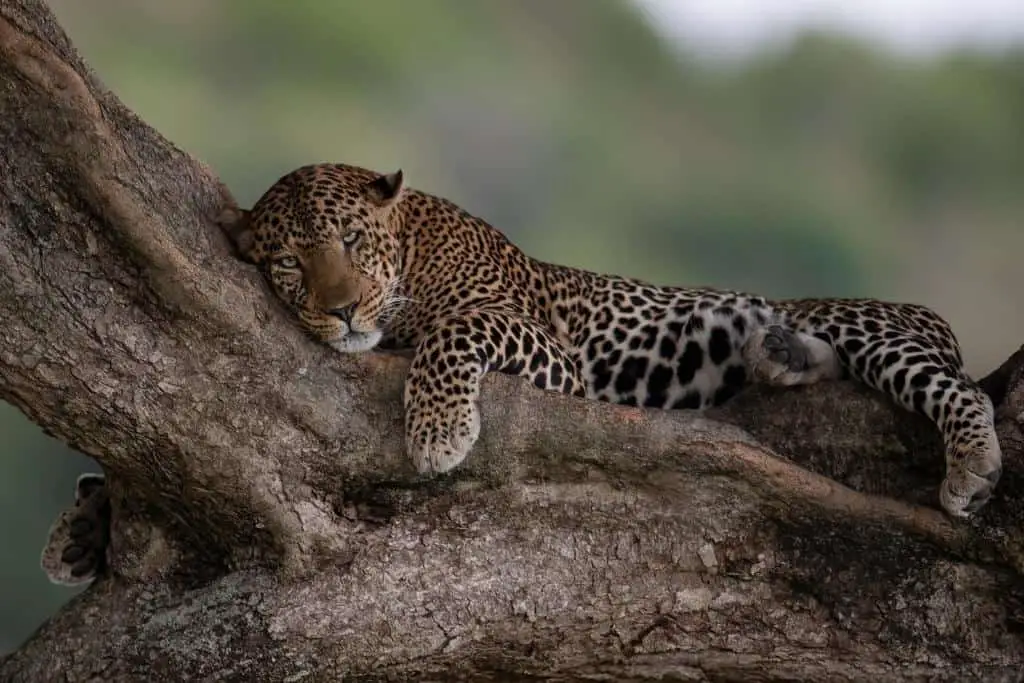
Leopards are expert climbers, often scaling trees for prey or a vantage point. But why do they bother with all that climbing? There are a few possible explanations.
- Climbing gives leopards a better view of their surroundings. Leopards can scan the landscape high up in the branches for potential threats or prey.
- Climbing helps leopards to stay cool in hot weather. When the temperature rises, leopards will often seek refuge in the shade of a tree.
- Climbing may be a way for leopards to stretch their muscles and have fun.
Regardless of the reason, it’s clear that climbing is an essential part of life for these fascinating animals.
How do leopards climb trees?
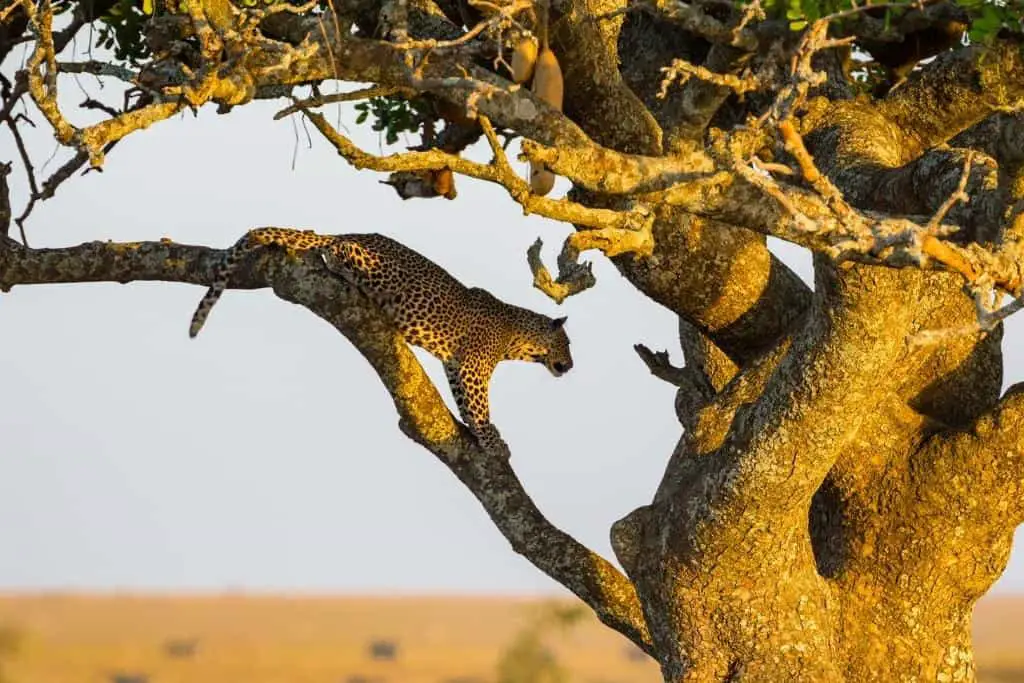
Their sharp claws and long tails help them quickly ascend a tree’s trunk. Once they reach the top, they can survey the area for potential prey.
Trees also protect leopards from other predators, such as lions and hyenas. When leopards are not actively hunting or resting, they often lounge in the branches of trees, enjoying the cool breeze and the beautiful view.
In addition to being excellent climbers, leopards are also powerful swimmers and can run at speeds of up to 35 miles per hour. This combination of speed, strength, and agility makes them one of the most fearsome predators in the animal kingdom.
What trees do leopards climb?
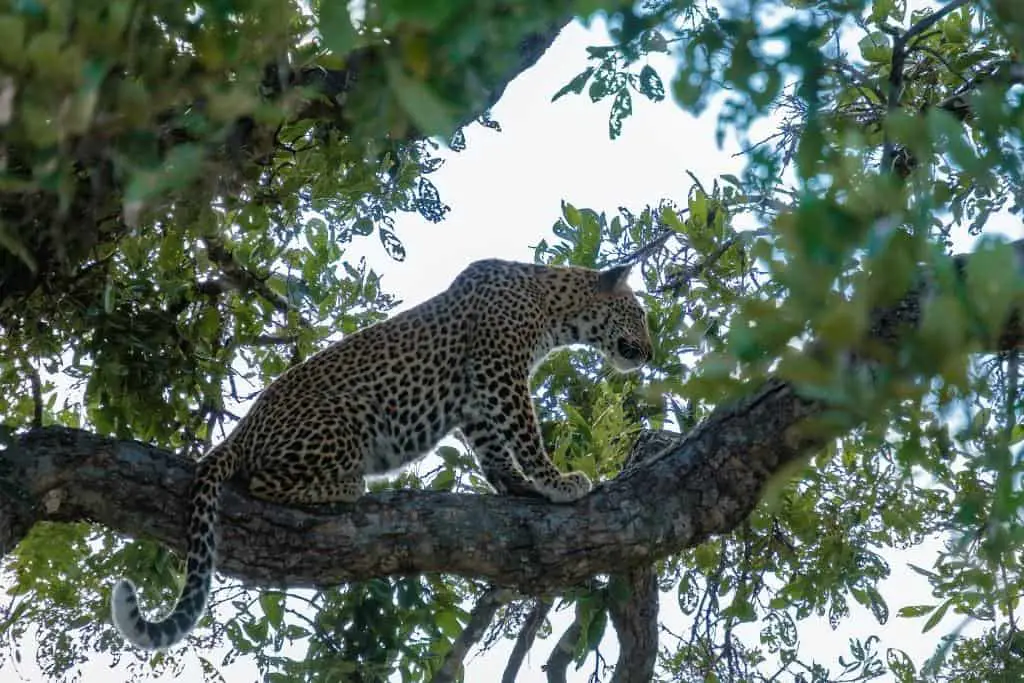
There are a variety of trees that leopards climb, depending on their geographical location. In Africa, for example, leopards often climb acacia and baobab trees.
These trees have strong branches that can support the weight of a leopard, and their foliage provides good camouflage for the animals.
In Asia, on the other hand, leopards more commonly climb fig trees. Figs typically have thinner branches than acacias, but they are also much taller, which gives leopards a better view of their surroundings.
In addition, figs produce a sweet fruit that leopards enjoy eating.
They can scale vertical walls and leap great distances from branch to branch with ease. This agility allows them to ambush their prey from above and escape from potential danger.
How fast can a leopard climb a tree?
Regarding tree-climbing, leopards are second only to cats like lynxes and bobcats. They can sprint up 25 feet of the trunk in just a few seconds, and they’re able to descend head-first at speeds of up to 20 miles per hour.
Not only that, but leopards are also expert tree-dwellers. They often spend days or weeks perched in the branches, waiting for prey to wander below.
Everything about leopards is designed for climbing, from their razor-sharp claws to their lightning-fast reflexes.
Can all Big Cats Climb?
All big cats are known for their impressive physical abilities, including their powerful muscles, sharp claws, and keen eyesight. However, not all big cats are equally adept at climbing.
For instance, lions and tigers are typically found on the ground, hunting for prey or relaxing in the shade. In contrast, leopards and mountain lions are skilled climbers and often make their homes in trees.
Jaguars also have excellent climbing abilities and are even known to swim. Ultimately, a big cat can climb depending on the specific species.
Some, like lions and tigers, simply don’t have the same physical adaptations that allow them to scale vertical walls and leap between branches.
Do leopards live in trees?
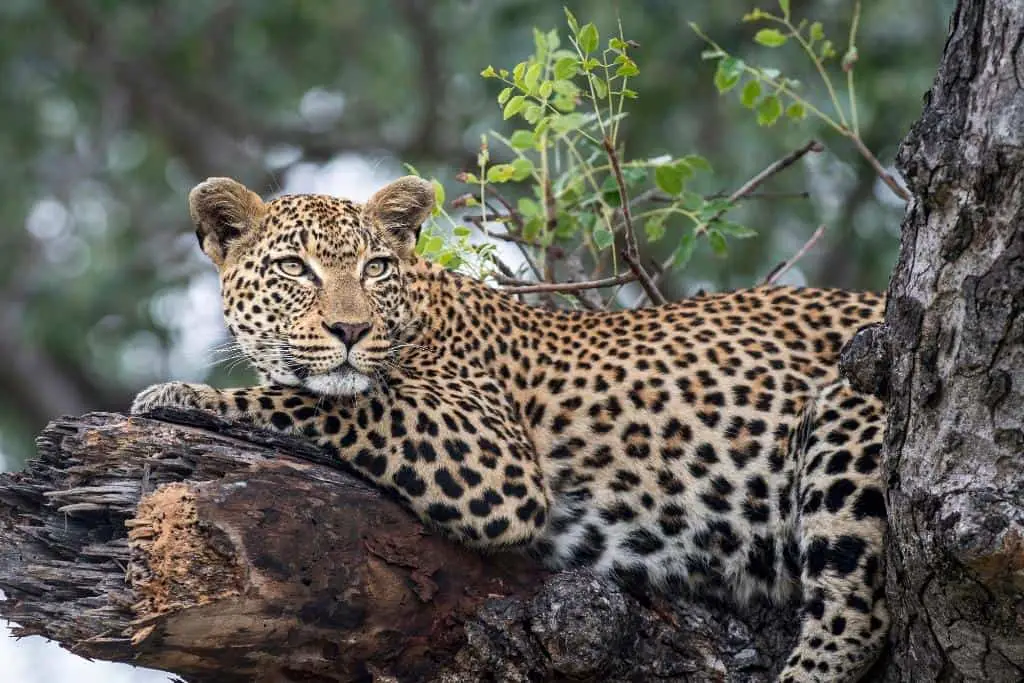
While leopards are expert climbers, they don’t typically live in trees. Instead, they tend to reside on the ground, in areas with dense foliage or rocky terrain.
This provides them with good camouflage and makes it easier for them to hunt for prey. In addition, leopards often use trees as vantage points to scan the area for potential threats.
When they feel threatened, leopards sometimes climb a tree to escape danger. However, they generally only stay in the branches for a short time before returning to the ground.
Do baby leopards climb trees?
Baby leopards are born with the same climbing abilities as their adult counterparts.
From birth, they can quickly scale vertical walls and leap between branches.
This allows them to escape from predators and reach high places where they can find food. As they grow older, leopards continue to hone their climbing skills and become even more agile.
By reaching adulthood, they are experts at tree-climbing and can climb faster and higher than any other big cat.
Do leopards live in Africa?
While leopards can be found in several different regions, they are most commonly found in Africa. In fact, Africa is the only continent where all four species of leopard are still found in the wild.
These four species are the African leopard, the Ethiopian leopard, the Northwest African leopard, and the Cape leopard. Leopards are also found in Asia, India, Pakistan, and China.
However, their numbers have declined significantly in recent years due to habitat loss and hunting. As a result, they are now considered endangered in many parts of their range.
